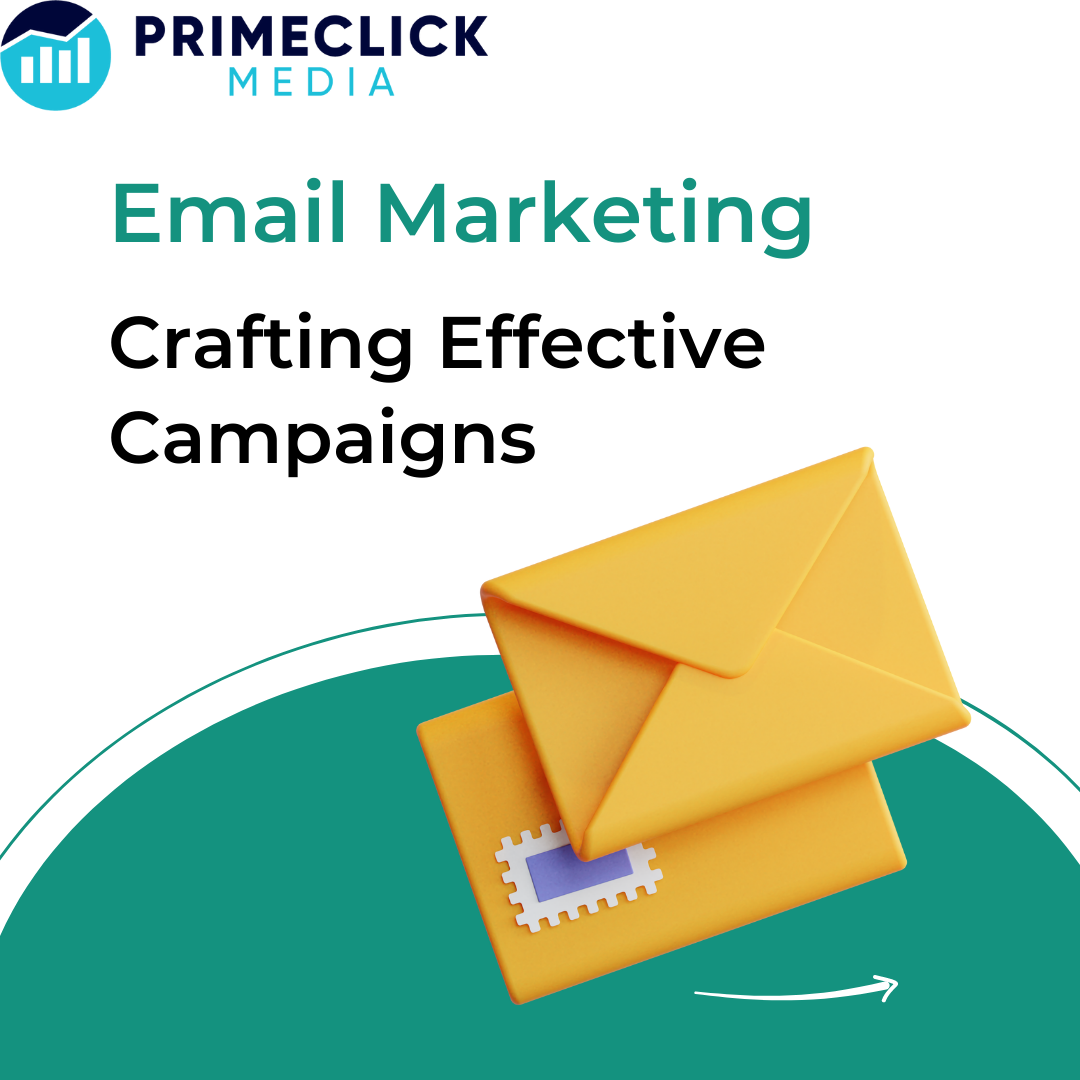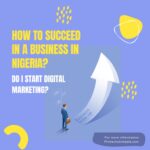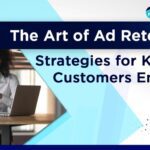Email marketing remains a powerful tool for connecting with your audience, driving engagement, and achieving your business goals. Crafting effective email campaigns is an art that requires careful planning, compelling content, and strategic execution.
In this blog post, we’ll explore trendy and actionable tips for creating email campaigns that grab attention, inspire action, and deliver results. Let’s dive in!
Email Marketing and Its Benefits
Email marketing is a digital marketing strategy that involves using email to communicate with a targeted audience, promote products or services, build relationships, and drive desired actions. It is a direct and personalized form of communication that allows businesses to connect with their audience in their inbox.
Email marketing typically involves sending various types of emails, such as newsletters, promotional offers, product updates, event invitations, or transactional messages. These emails are sent to individuals who have willingly subscribed or provided their email addresses to receive communications from the business.
The main objectives of email marketing are to engage, nurture, and convert leads into customers, as well as maintain and strengthen relationships with existing customers. It enables businesses to deliver relevant and valuable content directly to their audience, guiding them through the customer journey and encouraging desired actions, such as making a purchase, signing up for a service, or visiting a website.
Email marketing offers several benefits, including
- Personalization: Emails can be customized and tailored to individual recipients based on their preferences, demographics, or past interactions, creating a more personalized experience.
- Cost-Effectiveness: Compared to other marketing channels, email marketing is cost-effective, with low overhead costs and the ability to reach a large audience at a relatively low cost per email sent.
- Measurability and Analytics: Email marketing provides robust tracking and analytics, allowing businesses to measure the performance of their campaigns, monitor key metrics, and make data-driven decisions for optimization.
- Automation and Segmentation: Email marketing platforms offer automation and segmentation features, enabling businesses to send targeted emails based on specific triggers or criteria, ensuring the right message reaches the right audience at the right time.
- Building Customer Relationships: Email marketing helps foster and strengthen relationships with customers, allowing businesses to stay top-of-mind, provide value, and engage with their audience on an ongoing basis.
How Email Marketing is Still Better Than Other Marketing Tactics?
Email marketing continues to be a highly effective marketing tactic, offering several advantages over other methods. Here are some reasons why email marketing stands out:
Direct and Personal Communication
Email allows you to reach your audience directly in their inbox, making it a highly personalized form of communication. Unlike social media or display advertising, which relies on algorithms or ad placements, email marketing ensures your message is delivered directly to your subscribers. This direct line of communication fosters a stronger connection and allows for more personalized messaging and targeting.
High Return on Investment (ROI)
Email marketing consistently delivers a high ROI for businesses. The costs associated with email campaigns are relatively low compared to other marketing tactics. With careful segmentation, personalization, and targeted content, you can achieve significant results from your email marketing efforts. Whether it’s driving sales, generating leads, or building customer loyalty, email marketing can yield a substantial return on your investment.
Increased Conversion Rates
Email marketing is known for its ability to drive conversions. When executed effectively, email campaigns can lead subscribers down the conversion funnel, from initial interest to making a purchase or taking a desired action. By delivering relevant and timely content directly to subscribers’ inboxes, email marketing provides an opportunity to engage with your audience at critical stages of their buyer’s journey.
Enhanced Customer Relationships
Email marketing allows you to nurture and build relationships with your audience. Through regular communication, you can provide value, share relevant information, and address their needs and pain points. By delivering valuable content and personalized offers, you can establish trust, loyalty, and a sense of community with your subscribers. Strong customer relationships are the foundation of long-term success.
Measurable and Trackable Results
Email marketing provides robust analytics and tracking capabilities. You can measure key metrics such as open rates, click-through rates, conversions, and revenue generated. These insights allow you to gauge the effectiveness of your campaigns, identify areas for improvement, and make data-driven decisions. The ability to track and measure results empowers you to optimize your email marketing strategy for maximum impact.
Control and Ownership of Data
With email marketing, you have control and ownership of your subscriber data. Unlike social media platforms or search engines, where algorithms and policies can impact your reach and visibility, your email list is a valuable asset that you can leverage independently. By nurturing your email list, you have a direct line of communication with your audience that is not subject to external factors.
While email marketing is powerful, it’s important to note that success lies in executing it strategically. By focusing on delivering relevant, valuable, and engaging content, respecting subscriber preferences, and continuously optimizing your campaigns, you can harness the full potential of email marketing and drive meaningful results for your business.
Tips for Creating Email Campaigns
Build a Captivating Subject Line
The doorway to your email campaign is the subject line. Craft a captivating and concise subject line that grabs the reader’s attention and entices them to open the email. To grab their attention, be specific, make it urgent, or make them curious. Experiment with emojis, humor, or storytelling to stand out in crowded inboxes. Remember, the subject line sets the tone for the entire email and can significantly impact open rates.
Segment and Personalize Your Audience
Sending generic emails to your entire subscriber list is a thing of the past. Create audience segments based on demographics, preferences, past purchases, or level of involvement. This allows you to tailor your content to each segment’s specific needs and interests. Personalize your emails by using the recipient’s name and incorporating dynamic content that resonates with them. A personalized email creates a stronger connection and boosts engagement.
Compelling and Concise Content
Keep your email content focused, concise, and visually appealing. Start with a strong hook that grabs attention and communicates the value of your message. Use eye-catching images, clear headings, and bullet points to break up the text and make it easily scannable. Craft compelling copy that speaks directly to your audience, highlighting the benefits, solving their pain points, or offering exclusive deals. Remember, your content should be valuable, actionable, and in line with your brand voice.
Call-to-Action (CTA) that Drives Action
Every email campaign should have a clear and compelling call to action. Make your CTA stand out visually with contrasting colors, bold fonts, or buttons. Use action-oriented language that encourages readers to click, shop, subscribe, or engage with your content. Create a sense of urgency by incorporating limited-time offers or exclusive benefits. A well-crafted CTA increases click-through rates and conversions, driving the desired action from your audience.
Mobile-Friendly Design
With the increasing use of mobile devices, optimizing your email campaigns for mobile is essential. Ensure your emails are responsive, meaning they adapt to different screen sizes and resolutions. Use mobile-friendly fonts, appropriate image sizes, and large, tappable buttons. Preview your emails across various devices and email clients to ensure a seamless experience for mobile users. Remember, a mobile-friendly design improves engagement and conversion rates.
Test, Analyze, and Iterate
Successful email marketing involves continuous testing, analysis, and optimization. A/B tests different elements of your email campaigns, such as subject lines, CTAs, or content layouts, to identify what resonates best with your audience. Monitor key metrics like open rates, click-through rates, and conversions to measure the effectiveness of your campaigns. Leverage email marketing analytics tools to gain insights and make data-driven decisions for improvement.
Build Trust and Maintain Consistency
Building trust is crucial in email marketing. Be transparent with your subscribers, respect their privacy, and provide value with each email. Maintain consistency in your email frequency and branding, ensuring your subscribers recognize and trust your emails. Use double opt-ins to confirm subscriptions and allow easy unsubscribe options to maintain a healthy email list. Trustworthy and consistent emails foster long-term engagement and loyalty.
Conclusion
By following these effective email marketing strategies, you’ll craft campaigns that stand out in the inbox, engage your audience, and drive desired actions. Experiment, listen to your subscribers, and refine your approach based on data and feedback.
Remember, effective email marketing is a powerful way to nurture relationships, generate leads, and boost your business success. Happy email marketing!





